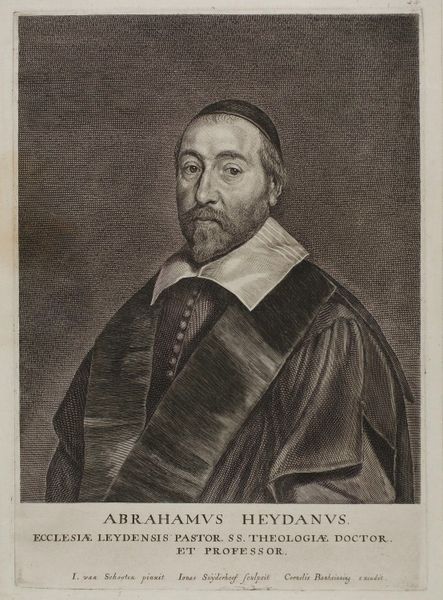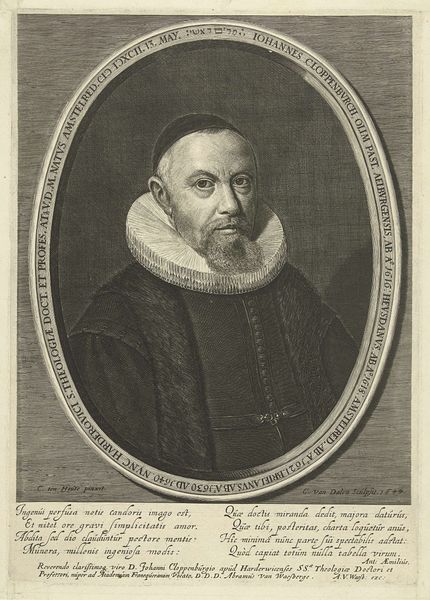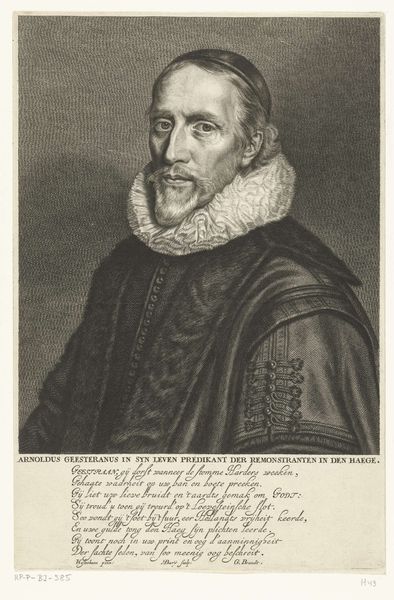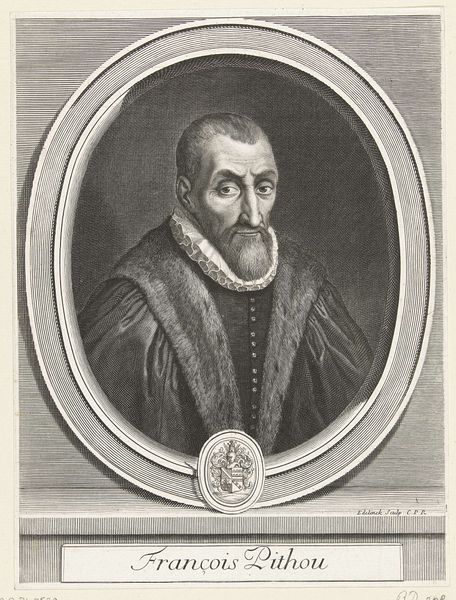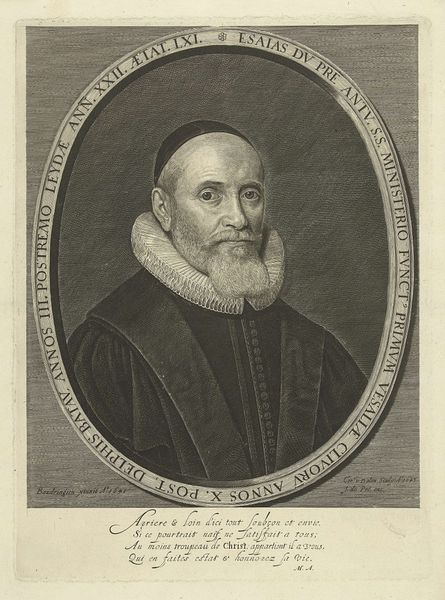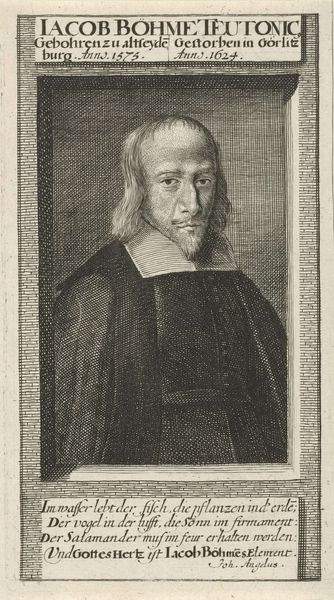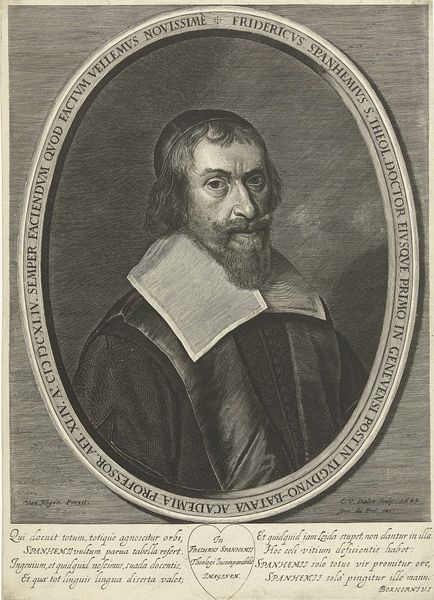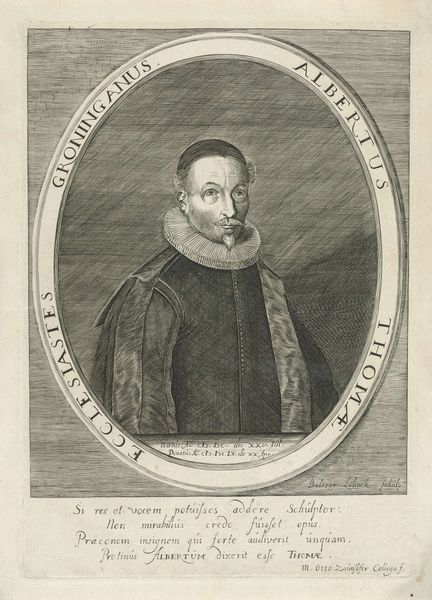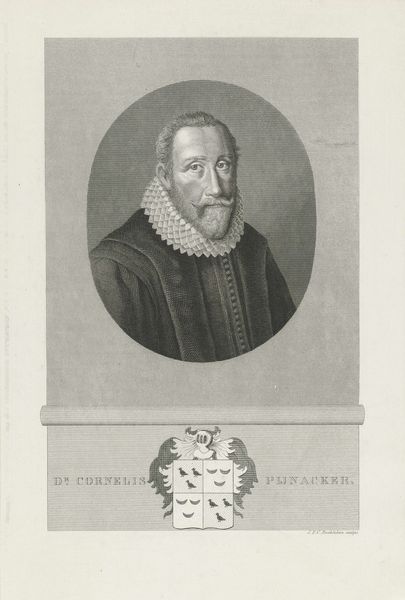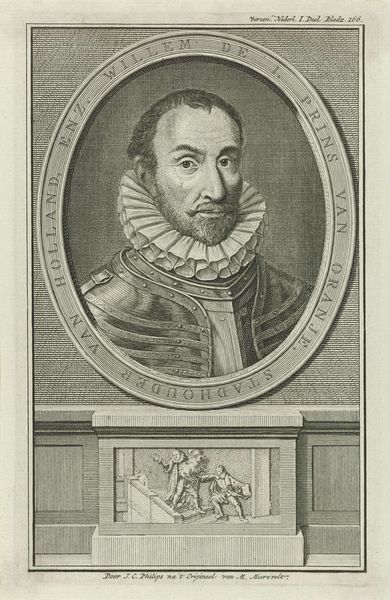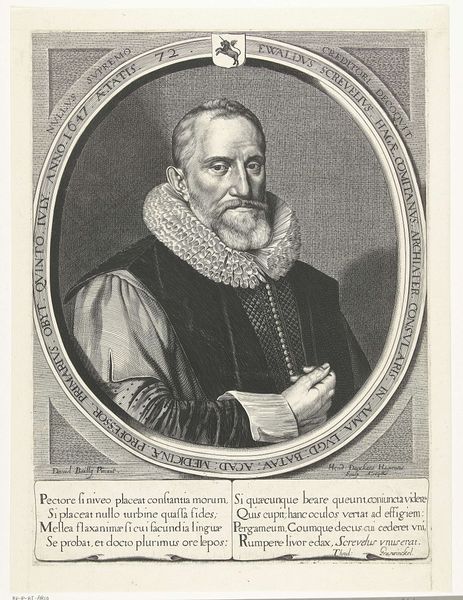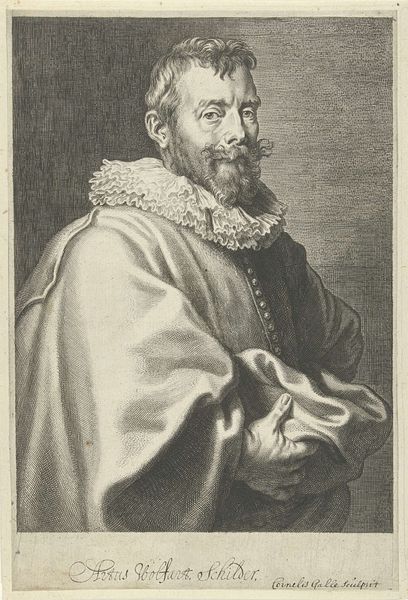
engraving
#
portrait
#
baroque
#
old engraving style
#
historical photography
#
pencil drawing
#
line
#
portrait drawing
#
engraving
Dimensions: height 322 mm, width 230 mm
Copyright: Rijks Museum: Open Domain
Editor: Here we have Jonas Suyderhoef's "Portret van Abraham Heydanus," an engraving dating back to somewhere between 1647 and 1665. The meticulous line work is immediately striking; it’s incredibly detailed for an engraving. What stands out to you when you look at this piece? Curator: The linear precision and tonal control evident in Suyderhoef’s engraving demand immediate attention. Notice the stark contrast between the dark cloak and the crisp white collar; this juxtaposition defines the pictorial space. Consider how the artist uses hatching and cross-hatching to create a remarkable range of values and textures. The subtle gradations on Heydanus’ face give form and presence. Editor: The texture is really impressive. So, the use of hatching creates the form, but what does it communicate? Is it simply technique, or does it suggest something about Heydanus himself? Curator: Indeed, technique and subject are intrinsically linked. Observe how the linear patterns direct the eye and emphasize certain features. The unwavering gaze, the firm set of the mouth; the details aren't just representational, they are constructing a very specific impression of authority and intellectual rigor. The portrait becomes more than a likeness, it is an articulation of power through form. Editor: That’s a great point. I hadn’t considered how the lines themselves contribute to that sense of authority. Seeing the structure highlighted like this makes me appreciate the artist's control over the medium. Curator: Precisely. By analyzing the formal elements, we uncover the intended meaning and impact of the work. It exemplifies how technical mastery enhances the expressive potential inherent within the chosen materials. Editor: I see this piece with new eyes now! Thanks for unpacking its visual language with me.
Comments
No comments
Be the first to comment and join the conversation on the ultimate creative platform.
